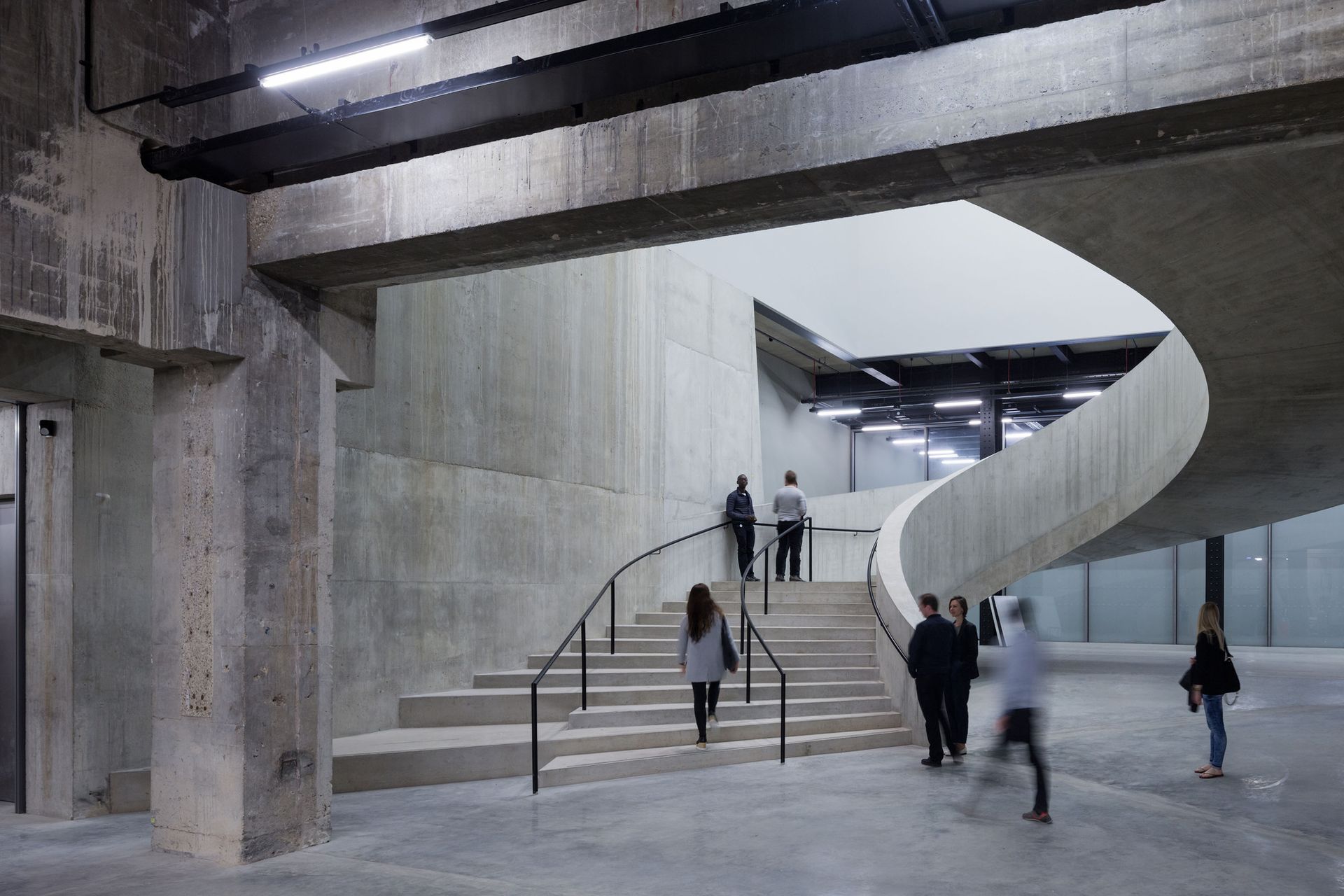To its architects, Herzog & de Meuron, the concrete oil tanks beneath the Tate Modern extension are more than its physical foundations, they have been “the starting point for intellectual and curatorial approaches” to the entire £260m scheme.
The lure of ‘as found’ spaces was never more obvious than when the Tate carved the Turbine Hall out of the Bankside Power Station back in 2000. On their return, Herzog & de Meuron has again used the ‘as found’ to inspire, taking the trefoil arrangement of three subterranean former oil storage chambers—The Tanks—and extruding it upwards, twisting the geometries through the Switch House’s 64.5 metre height until it reaches the 10th floor viewing platform.
The Tanks themselves are set aside for performance—although on opening they will also be occupied by 1960s sculptures that have broken free of their guard ropes Robert Morris’s Untitled (1965), Charlotte Posenenske’s Prototype for Revolving Vane (1967–68) and Rasheed Araeen’s Zero to Infinity (1968).
From here rises a concrete spiral staircase of Hollywood-via-industry glamour to the ground floor. Above is a stacked trio of flexible gallery spaces, events and members rooms that inhabit the brick-clad concrete ziggurat and which are joined by a sequence of elegant stairs occupying various corners of the building. Light is filtered into the circulation spaces through the perforated brick skin while that to the galleries proper is carefully controlled—daylight is anathema to the multi-media shows planned.

The 1960s pieces in The Tanks signal the thrust of this new hang that Tate Modern’s new director Frances Morris says emphasize art’s more direct engagement with the viewer since that decade. (And direct engagement seems to be the trajectory of London’s major collections with the Victoria and Albert Museum’s design director David Bickle revealing plans earlier this month to infest V&A East with audiences from front-of-house to conservation labs).
With the Switch House, Tate Modern not only has 40 percent more space for galleries and the public but is a literal tour de force with the covering lattice forming a structurally advanced net of 336,000 bricks.

